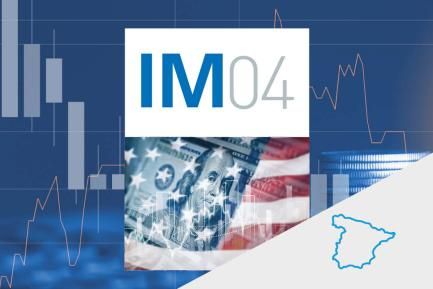Spanish exports: growth and consolidation
During the Great Recession, weak domestic demand led to a large number of companies looking for business abroad as from 2010. As a result, exports of goods and services went from representing 25.5% of GDP in 2010
to 34.2% in Q2 2017 (and goods exports from 17.2% to 23.6%). Behind this growth in exports lies an increasingly internationalised set of companies. The question that now needs to be asked is whether this greater willingness of Spanish firms to export is likely to consolidate in the future.
To answer this question, first we need to distinguish between two very different periods in the growth of goods exports since the end of 2010. An initial phase of expansion, in the three-year period of 2011-2013, and another phase of consolidation as from 2014. In the expansionary phase, the total number of exporters increased, in net terms, by 41,797, up by 38.2% compared with the total in 2010. The fact that this net increase resulted from 215,136 companies starting to export and 173,339 companies stopping exports illustrates the high rotation among exporting firms (and the high company start-up and closure rate). The number of new exporters tended to rise during this period. On the other hand, the number of regular exporters, defined as those exporting for at least four years continuously and which tend to have less rotation, only increased by 2,405 in net terms, up by 6.2% compared with 2010.
By sector,1 companies selling industrial products dominated this phase, accounting for almost all new exporters with an increase of 54.1% compared with the number of firms from this sector in 2010. As a result of this larger number of new exporters in the industrial sector, during the period 2011-2013 the average size of exports per company (the average export flow in euros) fell by 17.6% in this sector. This figure reflects the fact that new companies tend to export less in terms of value. In the rest of the sectors (agrifood, beverages and consumer goods), the net increase in the number of exporters was lower, around 20%. Since fewer new companies entered these sectors, their average export value increased slightly. Nevertheless, as a whole, industry’s larger share (70%) meant that exporters’ average export value fell by 8.7% overall. This initial expansionary phase was therefore characterised by a large number of newly created exporting firms while the increase in the number of regular exporters was much more moderate. Specifically, this rise was 11.2% for industry, 6.4% for food, 14.0% for beverages and a drop of 1.6% for consumer goods.
The second phase, as from 2014 and with data available up to 2016, is one of consolidation. Over the past three years the number of exporters has fallen in net terms by 2,366 companies, down 1.6% on the end of 2013. However, el number of regular exporters has increased by 20.8% and the average export value by 9.7%. Analysed by sector, this consolidation is stronger among industrial products, with an increase of regular exporters of 36.0% (9,549 companies) and of the average export value (8.2%) in 2014-2016. Consequently, this period’s growth in exports cannot be explained by new exporters but by the consolidation and growth of existing firms.2
The food and consumer goods sectors have also consolidated, with a significant increase in regular exporters of 14.0% and 15.6%, respectively. However, unlike industrial products, the number of new exporters continues to rise (4.7% and 14.7%, respectively). This suggests these sectors still have a lot of potential. The food sector, traditionally with the largest exporters in terms of export flows in euros, grew in average size by 12.0% and, in terms of euros, has seen cumulative growth of 54.2% since the end of 2010, compared with 36.3% for total exports.
1. Datacomex data are broken down into four sectors: industrial and technology products (70.0% share), which we call industrial products in this Focus; agrifood (15.5%); beverages (1.8%) and consumer goods (12.8%).
2. It should be noted that this analysis is general given the size and diversity of the industry and technology sector.



